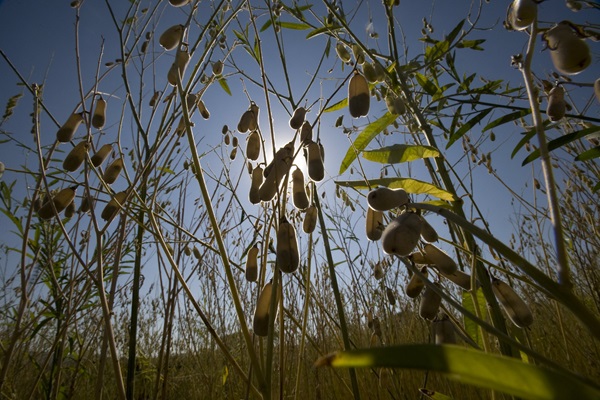
Rome - The bioeconomy can be a catalyst for addressing the current climate crisis and achieving global agrifood sustainability through a more efficient and responsible management of our natural resources.
This was the theme of Thursday's High Level Event, entitled Bioeconomy: the catalyst for agrifood systems transformation, one of eight meetings focussing on bioeconomy at this year's edition of the Science and Innovation Forum (SIF), an annual event organized by the Food and Agriculture Organization of the United Nations (FAO) within the framework of the agency's flagship World Food Forum.
Opened by the Director-General of FAO, QU Dongyu, and moderated by Joachim von Braun, a German agricultural scientist who acts as the President of the Pontifical Academy of Sciences, the event brought together high-level panellists and some of the field's biggest experts from around the world.
Pippa Hackett, Minister of State at Ireland’s Department of Agriculture, Food and the Marine, outlined Ireland’s efforts in this area. She called for a world that works in harmony with nature and emphasized the benefits of this approach, which include economic diversification and the creation of green jobs.
Carina Pimenta, National Secretary for Bioeconomy at Brazil’s Ministry of Environment and Climate Change, talked about the Brazilian experience. The country is in the process of creating a framework for re-directing investments to the bioeconomy, has made the preservation of biodiversity a priority, and sees the transition to bioeconomy as an economic and social opportunity, she said.
Christine Lang, a German entrepreneur in biotechnology and a consultant on bioeconomy, provided a technical perspective on the subject, noting how the concept of bioeconomy extends beyond agricultural production and also encompasses building materials, pharmaceuticals and even vaccines.
Other panellists included Gregory Jaffe, Senior Advisor for Regulatory Affairs in the Office of the Secretary at the United States Department of Agriculture (USDA).
Promising future
The term bioeconomy, as defined by the Global Bioeconomy Summit of 2020, involves "the production, utilization, conservation, and regeneration of biological resources, including related knowledge, science, technology, and innovation, to provide sustainable solutions (information, products, processes and services) within and across all economic sectors and enable a transformation to a sustainable economy."
Examples include biopesticides and biofertilizers (such as compost), bio-based plastics, biomass re-use (such as crop residues for briquettes and pellets, or fish waste for pharmaceuticals), and sustainable bioenergy.
FAO sees the bioeconomy as providing nutritious, safe food to a growing global population, providing sustainable development opportunities and new jobs while reducing environmental harm and waste.
Its potential goes far beyond cutting greenhouse gas emissions and restoring biodiversity. It opens new opportunities for green development and jobs in agriculture and other sectors, bolstering food security and nutrition, rural livelihoods, lives of Indigenous Peoples and local communities, and innovation at all levels of society.
According to one projection, a resource-efficient, circular bioeconomy could be worth as much as $7.7 trillion by 2030. Around 60 countries and regions already have bioeconomy or bioeconomy-related strategies and another 10 are currently developing them.
However, there can be trade-offs. Planting a crop for bioenergy instead of human or animal consumption, for example, could negatively impact local livelihoods, human food security, or livestock feed security.
Equally, not everything that's billed as bioeconomy is sustainable.
This is why FAO is advocating for the inclusion of bioeconomy in global frameworks on sustainable development, food security and nutrition, climate, biodiversity, and the environment; the development of further global metrics on bioeconomy sustainability to scale up public and private investments and accelerate trade in bio-based products; and for building a global and inclusive bioeconomy coalition.
In his opening remarks, the FAO Director-General stressed the importance of promoting a bioeconomy that is inclusive and adapted to local contexts.
Above all, “we need more concrete action. We need solutions to be implemented on the ground,” Qu said.
FAO's leadership role
FAO is the first UN agency to have developed a strategic priority programme on the bioeconomy, which was endorsed by its Members two years ago, and is positioning itself at the forefront of global efforts to promote bioeconomy innovations to make our agrifood systems more efficient, equitable, resilient, and sustainable. Since then, the topic has gathered momentum in international fora, such as the COP 27 gathering in Sharm el-Sheikh, the most recent G20 meeting in India, and August's Amazon Summit in Belem, Brazil.
To date, FAO is engaged in about 150 bioeconomy-related projects worth more than $330 million, representing about 15 percent of its entire portfolio.
In Pakistan, for example, FAO is currently designing a project that will help farmers turn waste from banana production into textiles. In Côte d’Ivoire, it is setting up a Farm School for the production and rearing of Black Soldier Fly larvae, which are dried and ground to make a protein-rich flour to be used as animal feed. And in Yemen, FAO officers are teaching farmers how to concoct natural insecticides using the mraemrah tree, garlic and hot pepper.